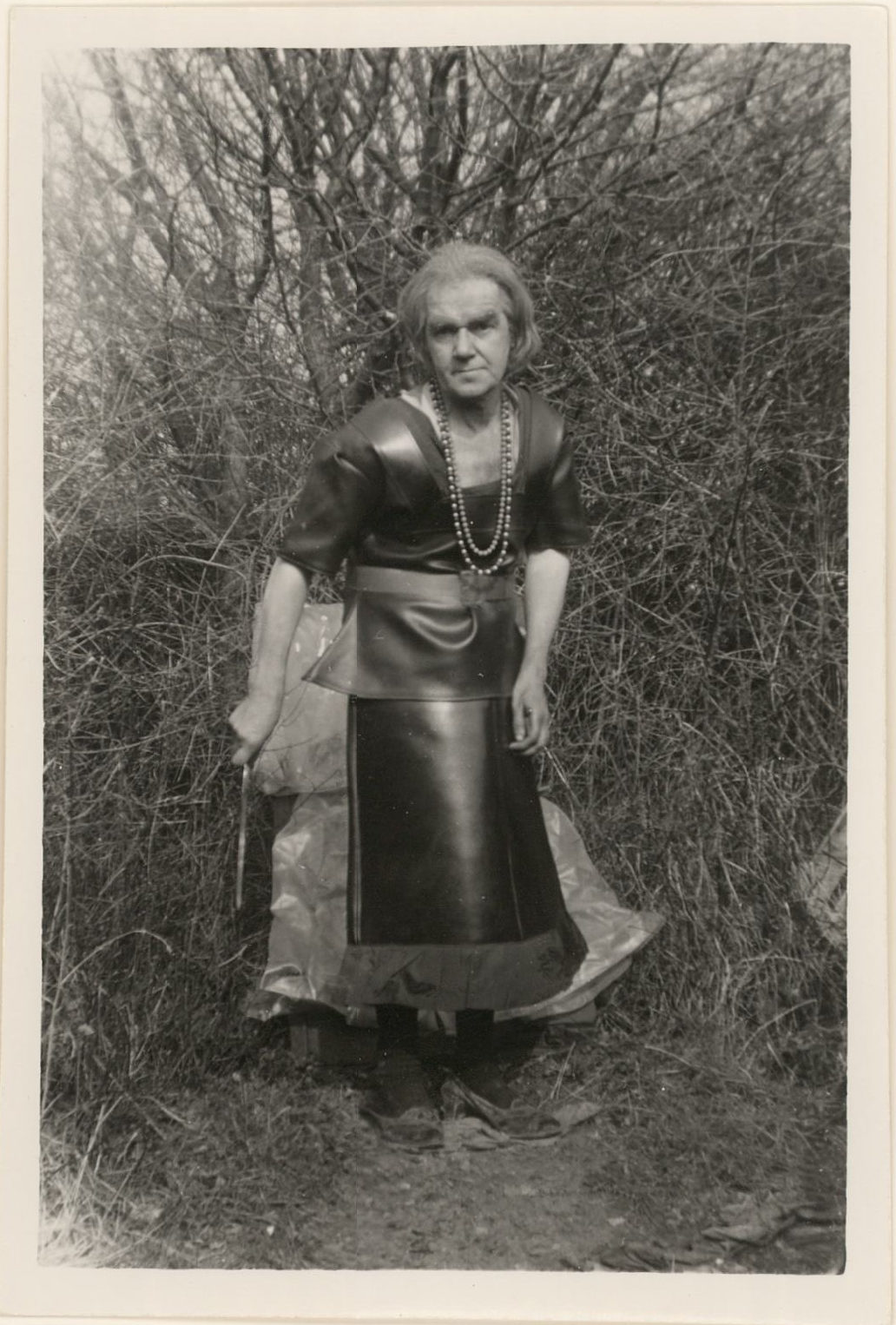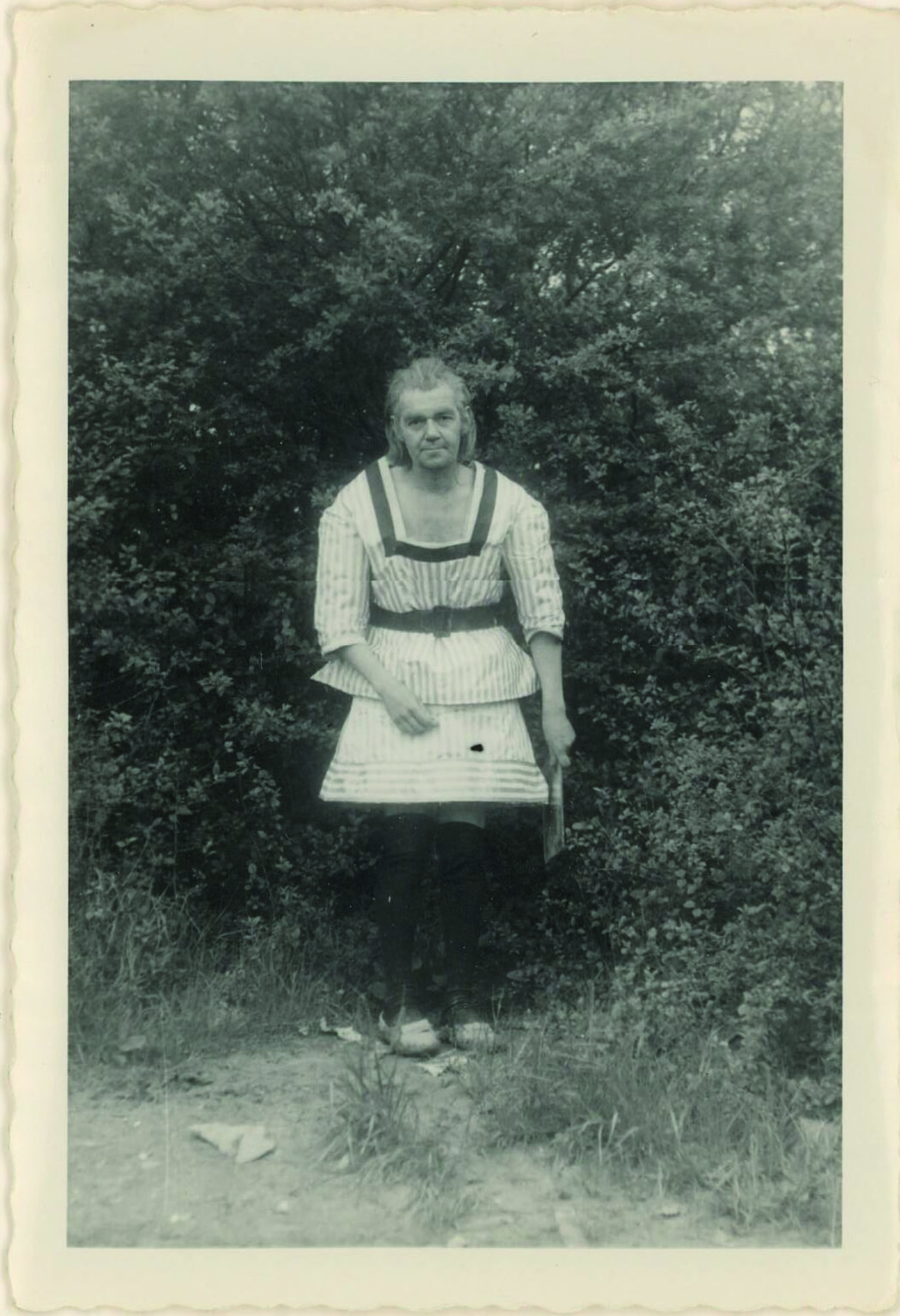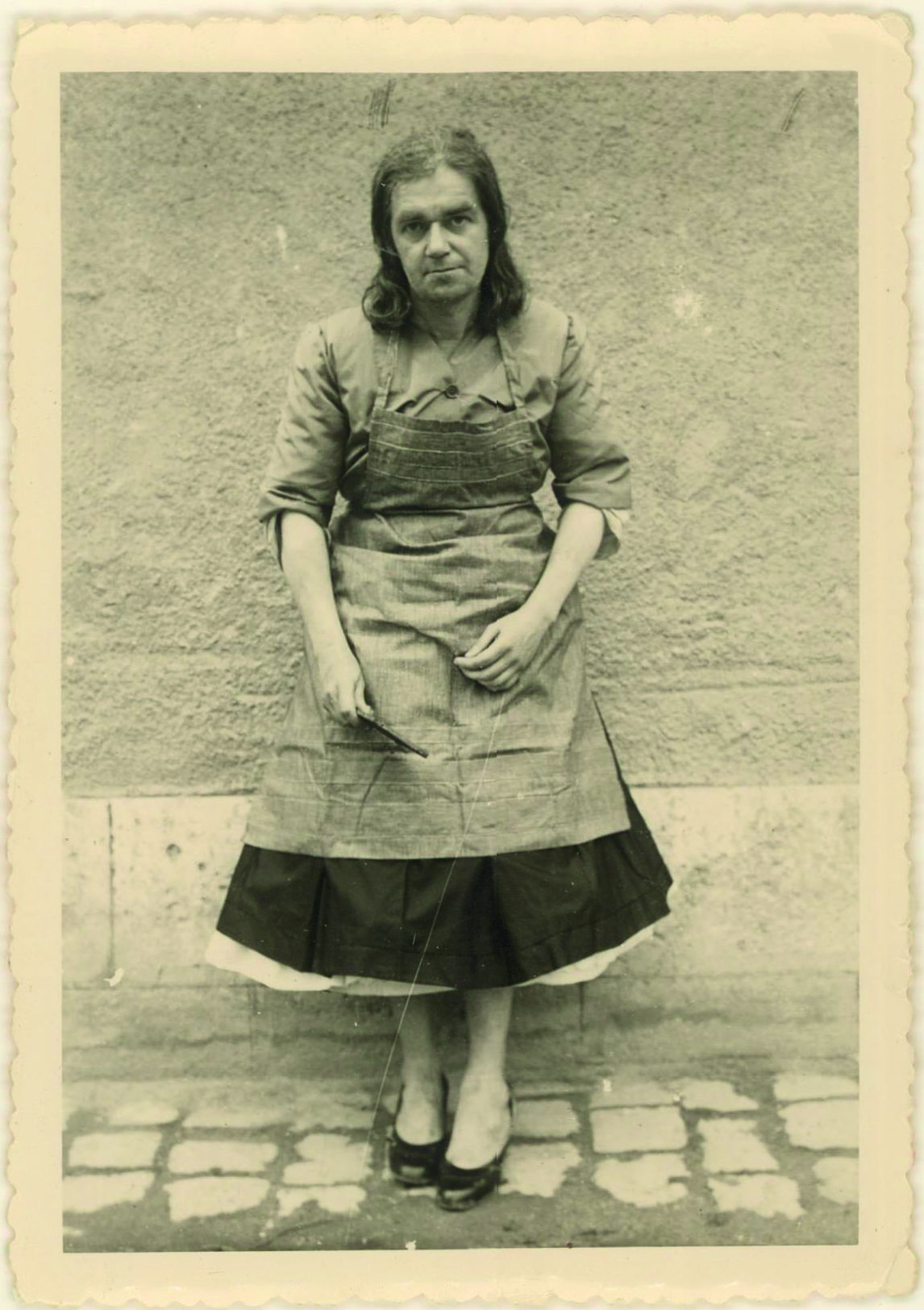Bascoulard, Marcel
France, 1913 - 1978
Born in 1913, Vallenay, France; died in 1978 in Bourges, France.
A painter, poet, designer, photographer and illustrator, Bascoulard inhabited an idiosyncratic universe of his own making. Though he left behind a diverse body of work, the photographs he took of himself dressed in elaborate feminine attire are the most intriguing, mysterious, and well-known. Marcel Bascoulard’s life was filled with paradoxes. A recluse, he knew everyone in town. A vagrant, he was rumored to have a small fortune. A withdrawn figure, he remained informed on current events, purchasing magazines each morning from his neighborhood newsstand. A quiet man, he taught himself five languages.
Born in a village near Bourges, a small town in central France, Bascoulard displayed extraordinary draftsmanship from an early age. A reserved student, he possessed an incredible visual memory and was capable of recreating maps of France, Africa and Asia with acute precision. He held a deep fascination with trains, and hoped to one day become an engineer. But after graduating from middle school at age seventeen, he opted for the solitary life of an ascetic, living on the outskirts of town in a makeshift home made from the remnants of an abandoned truck with his art as his only possession.
Starting in the 1930s, Bascoulard sold and bartered landscape paintings and drawings of the monuments and medieval streets of Bourges to locals. Using simple materials, mostly ink, colored pencil and pastel that he would smudge with his fingers on recycled paper, his conventional souvenir pictures are near-photographic representations. He often traded these works for food and milk for his rescued cats, which often appeared in his drawings and photographs. While his drawings were accepted by the bourgeois townspeople, the same cannot be said of his photography.
Bascoulard photographed himself beginning in 1942 until his death in 1978 and brought to his efforts the same scrupulous dedication and discipline evident in his drawings. He sometimes photographed himself as an over-the-top derelict in rags with a scruffy beard (an accurate depiction of his everyday garb), but images of him in feminine attire predominate. His early 1940s photographs capture a performative period in which he appeared in traditional nineteenth-century women’s fashion, and used a photographic studio and dramatic camera angles. By the 1950s, he began posing in a consistent style, eye-level to the camera with spare, less theatrical backgrounds.
Bascoulard’s work was first introduced to American audiences in 2021 in the seminal exhibition Photo Brut at the American Folk Art Museum. His work has been shown extensively in Europe: at the Musée d’art moderne et contemporain in Saint-Etienne, France; the Fort Institute of Photography, in Warsaw, Poland; Halle Saint Pierre in Paris; the Musée de Grenoble, Grenoble, France; the Punta della Dogana in the Pinault Collection, Venice, Italy; and during the Rencontres de la Photographie in Arles, France.


